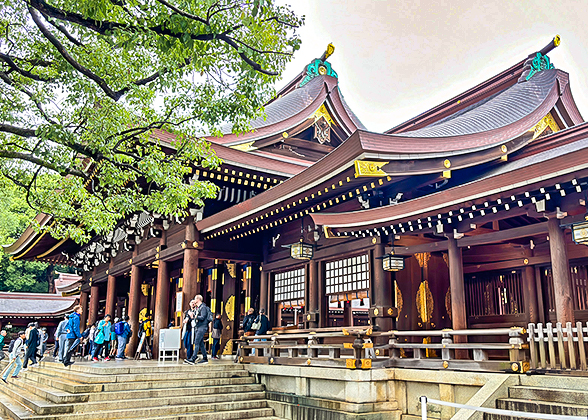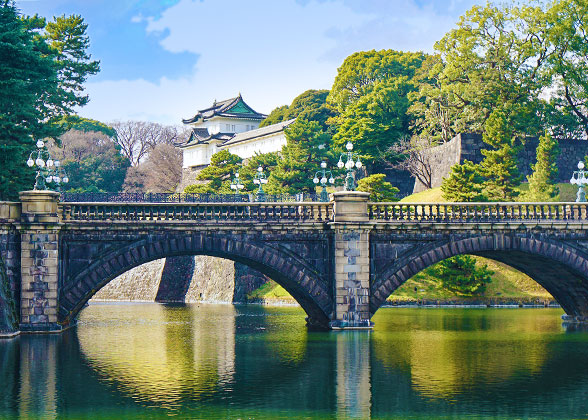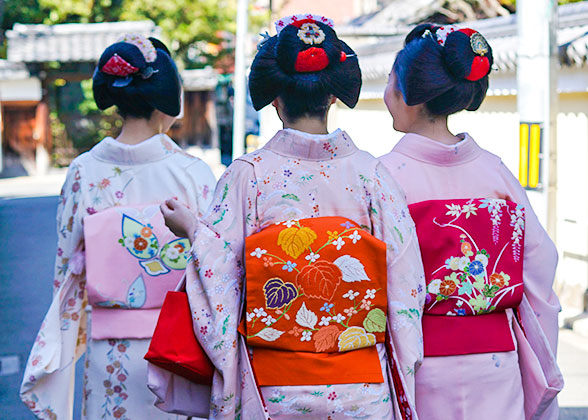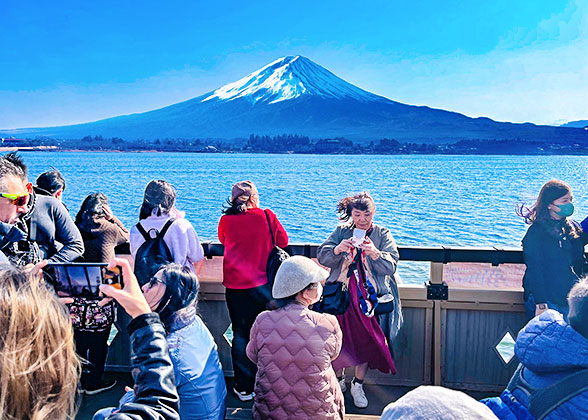Meiji Jingu Shrine
What to See and Do in the Shrine
1. The Rich Alcohol Offered to Kami
Kami refers to the god of Shintoism, and believers need to offer wine to the gods. Walking along the path to the Meiji Jingu Shrine, you can see many casks on both sides with colorful packaging. These casks are full of Japanese sake, and provided by the wineries all over Japan. And you even can see casks with wine from France.
|
|
|
2. The Inner Garden of the Shrine
One of the notable scenes of the garden in the shrine is the Japanese iris in June and it is said that the iris is the noble flower of Japan. You have the opportunity to appreciate about 1,500 iris of nearly 150 species. Besides, you can appreciate the red azalea in spring and red maple leaves in late autumn. In the South Pond of the garden, you may able to see tortoises, carp and water birds.Another famous spot in the garden is Kiyomasa’s Well. It is said that the well can bring good luck to worshipers since the well gains the vital spirit from Mount Fuji. You can observe that fresh spring water comes out of this well all the time. There is a saying that the well can only be visited before noon on a sunny day since it gathers bad luck on rainy days or in the evening instead of good luck.
By the way, you need to pay 500 yen to enter the Inner Garden.

Torii Gate
|
3. Appreciate Traditional Japanese Wedding
Meiji Jingu Shrine is the most popular shrine for Japanese couples to hold a traditional wedding, and thousands of weddings are held in the Shrine every year. The royal members of Japan also get married here. At the wedding, the bride will wear a pure white robe, which is called an unsullied garment. The bridegroom will wear the black kimono and a cloth striped pleated skirt, with a small white flower ball in the middle of his chest and a white folding fan in his hand. During the wedding process, the beautiful psychic and the shrine's clergy will lead the way, accompanied by palace music. Besides, the huge red umbrella is over the heads of the two newlyweds.
|
|
|
4. See the Varied Dolls in the Doll Thanksgiving Ceremony

The Dolls in the Shrine
|
Things You Need to Know Before Visiting the Shrine
1. Take off your hat and bow when entering and leaving Torii Gates.
There are totally three Torii Gates in the shrine. The Second Toril Gate is the biggest wooden torii in Japan, about 12 meters (39 feet) high, 17.1 meters (56.1 feet) wide, and 1.2 meters (3.9 feet) in diameter.2. Wash your hands before worshiping.
On the left side of the third tori gate, you can see a water basin, called temizuya. There are many ladles there for visitors to conduct the hand-washing ritual before worshiping in the shrine.Step 1: Pick up the ladle with your right hand and take a spoon of water.
Step 2: After cleaning the left hand with the water in the ladle, wash the right hand with the ladle.
Step 3: Hold the ladle again in the right hand, pour a little water into the left hand, and bring the water in the left hand close to the mouth.
Step 4: Swish with the water in the left hand, spit out the water, and then wash the left hand.
Step 5: Stand the spoon upright and let the water in the ladle clean the rim of the spoon.
Step 6: Put the ladle back to its original position.
|
|
|
3. Perform "Bow Twice, Clap Twice, Bow Once" at the shrine.
After crossing the third torii gate, you can see a beautiful wooden gate. Once you step into the gate, the oratory is visible to you, then you can conduct the ritual to pray. The following are the steps to pray.Step 1. Stand in front of the money box and nod gently, ringing the bell if there is one.
Step 2. Put your money in the money box.
Step 3. Bow twice at 90 degrees.
Step 4. Clap your hands twice in front of your chest and pray your request in silence.
Step 5. After the prayer, bow again.
Note: In general, Japanese will put a 5 yen coin in the box. However, the Japanese rarely put 10 yen or 500 yen into the box, since their pronounce stands for that your request may not be achieved. Foreign coins are accepted here as well.
Three Paths to the Shrine
1. The south path refers to the way from the JR Harajuku Station or the Metro Meiji-Jingu Mae Station to the shrine.2. The north path refers to the way from the JR Yoyogi Station.
3. The west path refers to the way from the Sangubashi Station of Odakyu line.
Note: The most popular path is the south path and the shortest path is the west path.
The three paths to the shrine are paved with small stones, called "tamajari," which are indispensable to the shrine and are said to help purify one’s mind when walking on them. You can find out that there are rarely people walking in the middle of the path, which is left for gods. You’d better follow the tradition and use either side of the path. By the way, the three paths are not short, it is advisable to wear comfortable shoes.
|
|
|
How to Get to Meiji Jingu Shrine
1. Take the JR Yamanote Line, then get off at Harajuku Station, and you only need to walk for about 10 minutes to reach the shrine.2. Take the Tokyo Metro Chiyoda Line or Tokyo Metro Fukutoshin Line, then get off at Meiji-Jingu Mae Station, and it takes about 11 minutes to walk there.
3. Take Odakyu line, then get off at Sangubashi Station, and you need to walk for about 8 minutes to get there.
Opening Time and Tickets
The opening time is varied based on seasons and weather. In general, it is open from 5: 00 to 18:00 in summer, and from 6:00 to 16:00 in winter. There is no entrance fee for Meiji Jingu Shrine, except some inner sites.Nearby Attractions to Visit
After visiting the Meiji Jingu Shrine, you can explore the lively nightlife area of Kabukicho, which is located in Shinjuku. You can take the JR Yamanote Line or the Tokyo Metro Fukutoshin Line from Meiji Jingu Shrine, and a single ride takes about 15 minutes. Besides, if you are interested in natural scenery, it is a good choice to visit Yoyogi Park or Shinjuku Gyoen National Garden. You can directly walk to Yoyogi Park from the shrine, which takes about 10 minutes. If you plan to visit Shinjuku Gyoen National Garden, you can take the Tokyo Metro Fukutoshin Line at Meiji-Jingu Mae and get off at Shinjuku Gyoen Mae, and the single ride takes about 19 minutes. Besides, Tokyo Metropolitan Government Building is a good place to overlook the city as one of the tallest buildings in Tokyo. You may take Keio Dentetsu Bus at Sangubashi Station and get off at Shibuya Station to go there, which costs 230 JPY, 10 minutes.
Read more:






